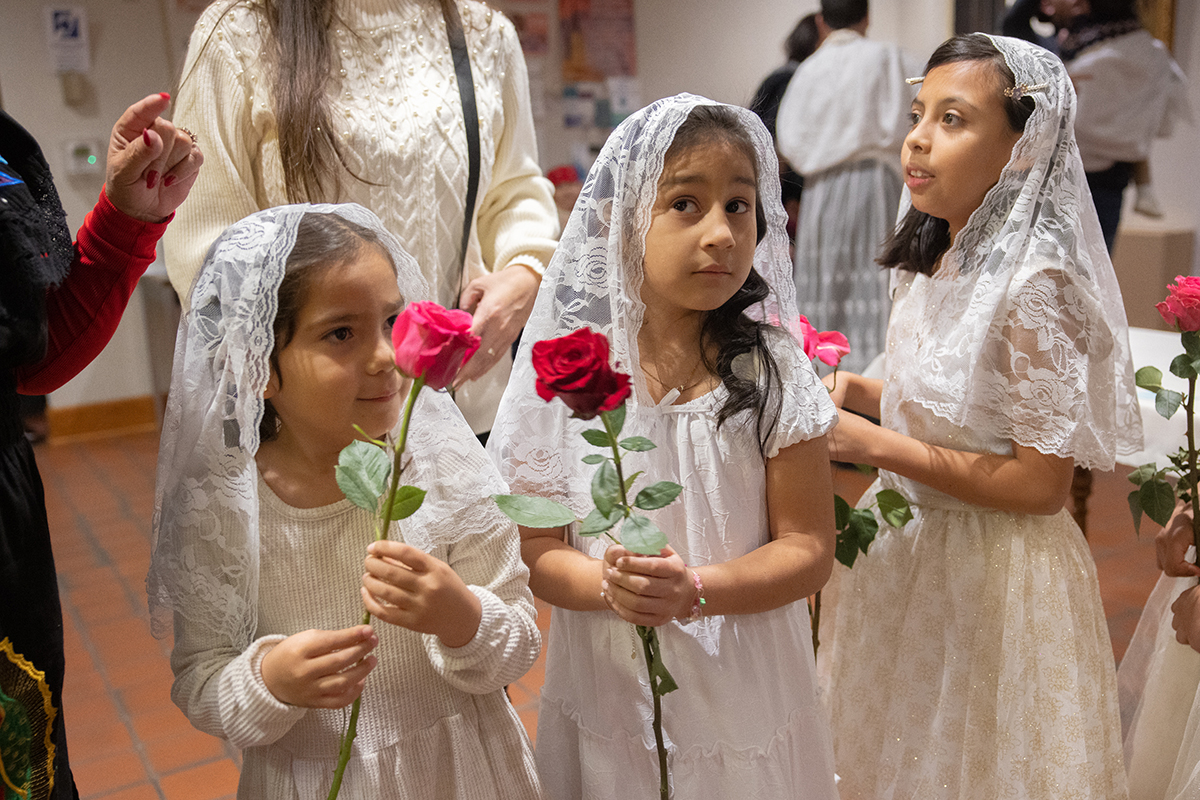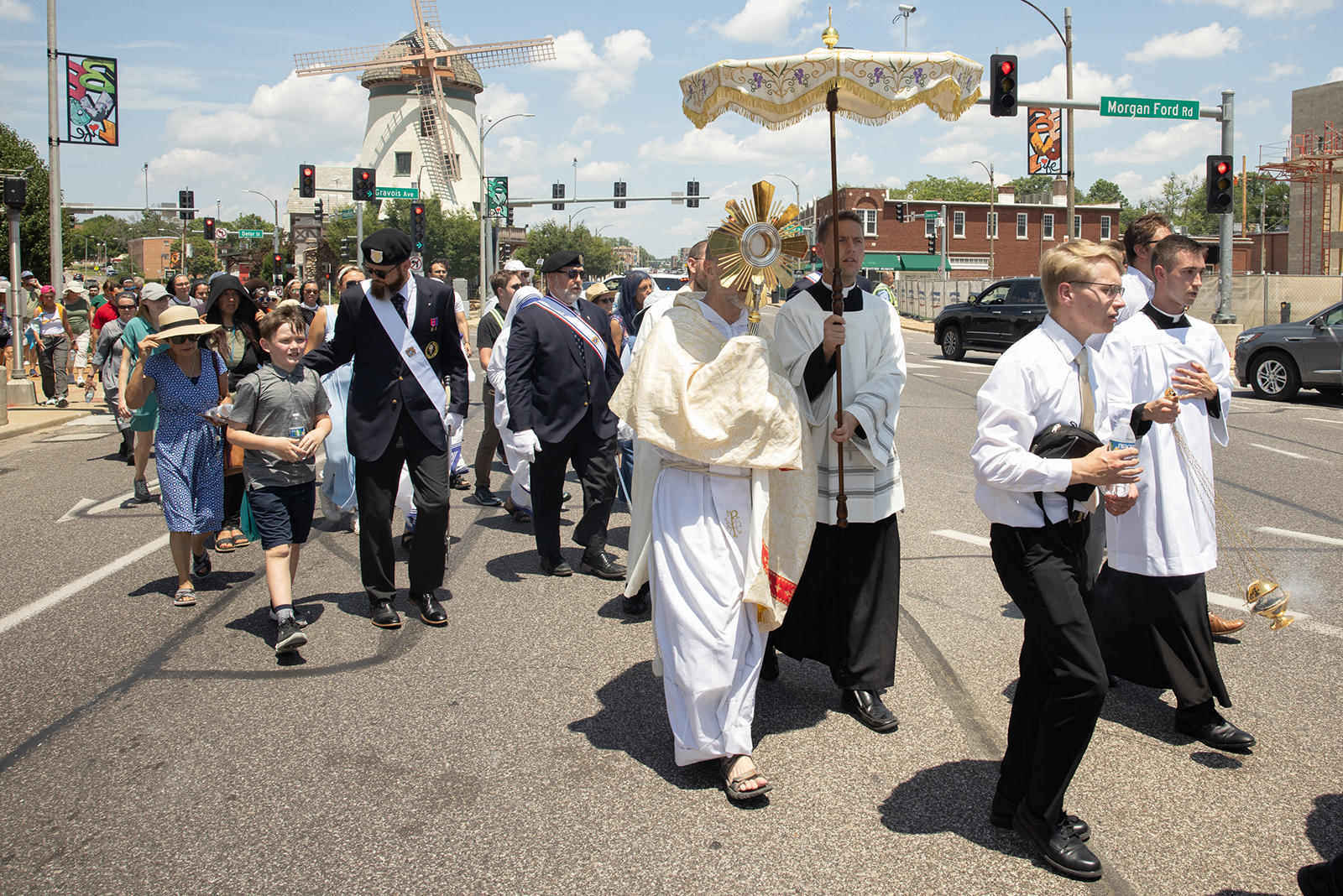Bishop DuBourg’s arrival 200 years ago helped transform St. Louis into the ‘Rome of the West’
In the second decade of the 1800s, Catholicism was teetering in the future Archdiocese of St. Louis.
“Catholics in the area had ‘calloused hearts’ and ‘extreme indifferentism,'” an archdiocesan history reports. “There were few priests, religion practice was spasmodic and the quality of faith was uneven.”
The church, at the site of the current Basilica of St. Louis, King of France, “was a tumbledown log building which needed a lot of repair.” And the rectory was little more than a shack or barn, without doors, floors, windows and furniture.
Against this backdrop, Bishop Louis William Valentine DuBourg arrived and laid the foundation for the city named after a saint to flourish and become known as the “Rome of the West” — the home of so many religious communities and churches that it rivaled the city in Italy.
As the archdiocese marks the 200th anniversary of Catholic education in the St. Louis area, it also celebrates the game-changing arrival of Bishop DuBourg, who set this all in motion.
Was God’s Providence involved in his presence? Perhaps.
Bishop DuBourg actually was the first Bishop of Louisiana and the Floridas, installed in Rome on Sept. 24, 1815, by Pope Pius VII. His territory included all of the Louisiana Purchase — basically everything west of the Mississippi River to the Rocky Mountains. The United States bought it from France for $15 million in 1803.
New Orleans had been an episcopal city under the Diocese of Baltimore and seemed to be the probable choice for Bishop DuBourg’s episcopal see; in fact, before his episcopal ordination, he had served there for three years as apostolic administrator after the diocese was formed in 1812. However, Capuchin Monk Father Antonio de Sedella held sway over New Orleans as pastor of the cathedral and refused to recognize Bishop DuBourg’s authority. So, Bishop DuBourg chose St. Louis, which he had never even visited.
New Orleans “rejected the man we welcomed and gave a home,” homilist Msgr. Michael J. Witt said succinctly in the Solemn High Mass on Jan. 1 at Ste. Genevieve Church to mark 200 years — to the date — that Bishop DuBourg celebrated the same type of Mass after arrival in Ste. Genevieve. The Mass was the first that he celebrated as a bishop in the Louisiana/Florida diocese. Msgr. Eugene Morris celebrated Mass this time around.
“This event marked the penetration of history and place which would begin, once and for all, the Catholic evangelization of America’s heartland,” Msgr. Witt said.
Vincentian Father Felix de Andreis, whom Bishop DuBourg had recruited in Europe after ordination, and Ste. Genevieve’s leading citizens greeted Bishop DuBourg upon arrival on New Year’s Eve 1817. In “Sketches of the Life of the Very Rev. Felix de Andreis,” Bishop Joseph Rosati quoted Father de Andreis’ description of the milestone: “… [w]e conducted him in triumph, under a canopy, to the church, the bells ringing all the time, amidst the universal joy of Catholics …”
Later, in the church, “Bishop DuBourg spoke eloquently of the love he had for his flock,” Msgr. Witt said.
Bishop DuBourg also spoke eloquently — or “handsomely,” according to a contemporary account — upon his arrival in St. Louis (via Cahokia) on Jan. 5, 1818. Here, he was greeted by Bishop Joseph Flaget from the Diocese of Bardstown, Ky. (later to become the Diocese of Louisville).
“Two carriages took them both from the landing to the presbytery,” Ann Hunt wrote to her father, Jean Baptiste Charles Lucas, in 1818. “Four priests attended them from thence to the church, besides twelve little boys who walked in procession before the two Bishops who were under the dais which was supported by Messrs Didier, Pratt, Sarpy & Belcour.”
She described the church as being decorated “handsomely,” the adverb of the day.
“Bishop Flaget … addressed our bishop very handsomely,” she wrote, adding that “Bishop DuBurgh [sic] is certainly more eloquent than the other at all events he speaks more handsomely, the church was never so crowded since I have been here. … All the people appear to be much pleased with their new acquisition.”
In short order, Bishop DuBourg secured funds for a new wooden church, which was replaced 21 years later by what we now call the “Old Cathedral.” Then, he established Catholic education.
After ordination in Rome and before his arrival in St. Louis, he recruited religious communities to serve in the Louisiana/Florida Diocese. Vincentian Fathers de Andreis and Rosati arrived in 1817, set up shop in Perryville and founded St. Mary of Barrens Seminary. In 1818, the Vincentians founded St. Louis Academy, which later transferred to the Jesuits and became St. Louis University.
Then, in August 1818, future saint Mother Rose Philippine Duchesne and Religious of the Sacred Heart arrived and founded the first free school west of the Mississippi, in St. Charles. And the Christian Brothers came to start a school in Ste. Genevieve.
Bishop DuBourg spent eight years as bishop of Louisiana/Florida with only about half that time at his home base in St. Louis. After 1822, he spent the next four years visiting the far reaches of the diocese before returning to France and resigning as bishop.
St. Louis officially became a diocese in 1826, with Father Rosati becoming the first bishop and building upon Bishop DuBourg’s legacy.
In the second decade of the 1800s, Catholicism was teetering in the future Archdiocese of St. Louis. “Catholics in the area had ‘calloused hearts’ and ‘extreme indifferentism,’” an archdiocesan history … Bishop DuBourg’s arrival 200 years ago helped transform St. Louis into the ‘Rome of the West’
Subscribe to Read All St. Louis Review Stories
All readers receive 5 stories to read free per month. After that, readers will need to be logged in.
If you are currently receive the St. Louis Review at your home or office, please send your name and address (and subscriber id if you know it) to subscriptions@stlouisreview.com to get your login information.
If you are not currently a subscriber to the St. Louis Review, please contact subscriptions@stlouisreview.com for information on how to subscribe.





